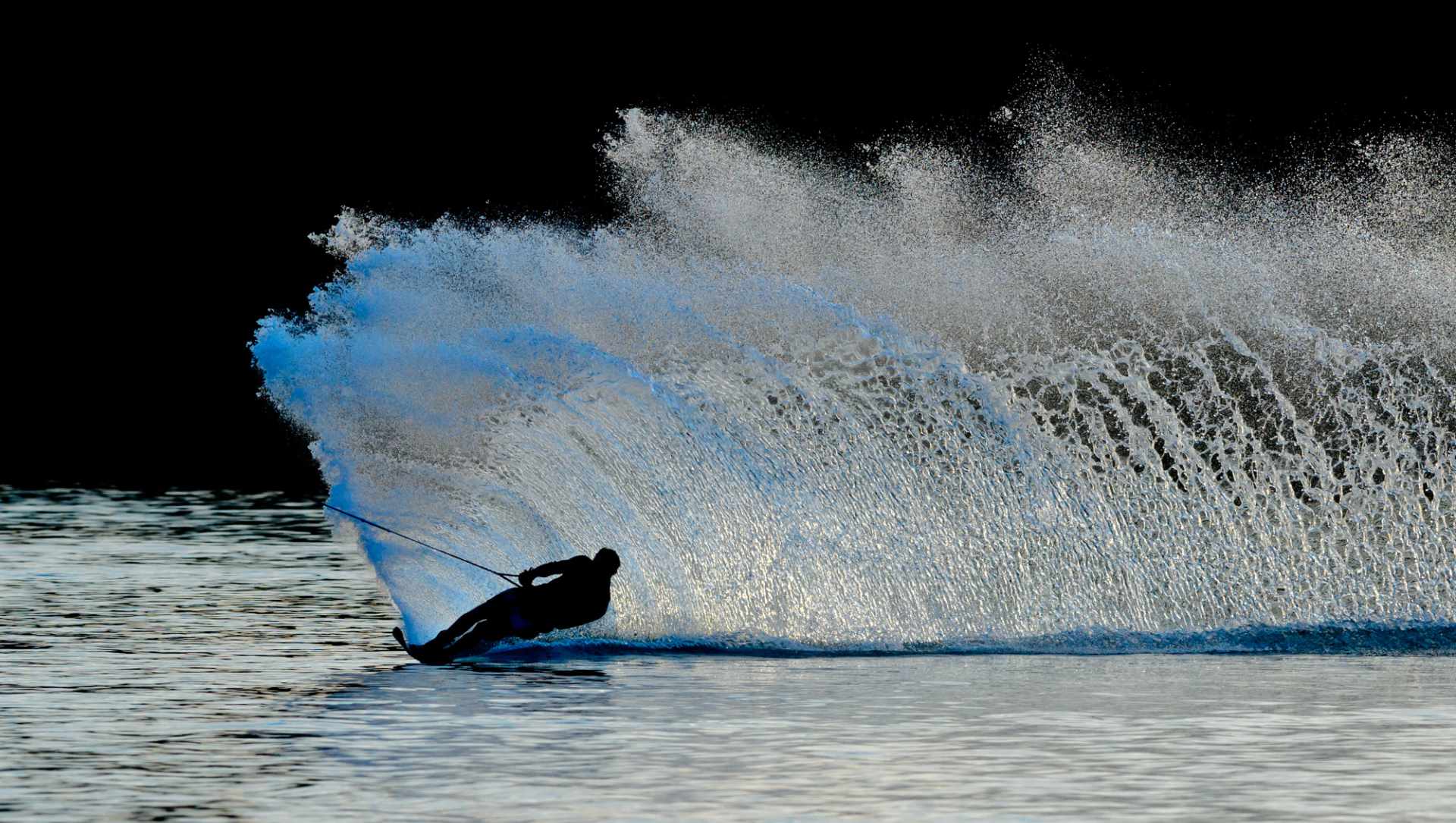
Aggressive slalom waterskiing requires placing your ski on edge. To achieve such positioning, you have to consciously fall away from the boat as you turn and then rely on your strength to pull yourself back up as you cross the wake. Once upright, you repeat the procedure in the opposing direction: let go of the rope with your away hand, extend your forward hand and begin your turn, allow yourself to fall away from the boat in order to lay the ski on edge and cut hard against the water, then grab hold of the rope with both hands and pull yourself upright as you cross the wake to decelerate and prepare for the next turn.
The key to achieving your maximum potential is knowing how far you can fall and still be able to pull yourself upright. You need to identify the intersection where your strength, gravity and pull of the boat all come together; the point at which all these forces are in balance. Because gravity is a constant, as is usually the boat, the undetermined variable is your strength. Thus, you must test the limits of your muscles. In order to improve you must be willing to fall until you fail.
For an aspiring waterskier—as I was in high school—this creates quite a paradox. If the goal of waterskiing is to stay upright, why must I fall to be successful?
For years I struggled to reconcile this apparent contradiction. As a result, I skied very controlled and seldom tested the limits of my strength. My ski runs rarely, if ever, ended in a wipeout. I was simply afraid to fall. And although I improved and became a fairly proficient waterskier, I failed to leverage the opportunity presented to become a great waterskier.
Fear of failure is common. And while it certainly can prevent us from trying, sometimes it prevents us from fine tuning. How far can we fall before pulling ourselves back up? Often times, that is the key variable. Because if you know your limits, exactly, you can push right up to them and over time work to extend them.
But some of us are afraid to find out. Thus, we play conservative; we underestimate our strength and subsequently fail to fully leverage the occasion. To those around us, it appears as a good, if not great, effort. But within ourselves, we know we could have pushed harder, held on longer or gone further.
Resist the temptation. Recognize that sometimes success is derived FIRST from falling to fail and THEN failing to fall.
So go find smooth water and test your limits. You’re likely much stronger than you think.

